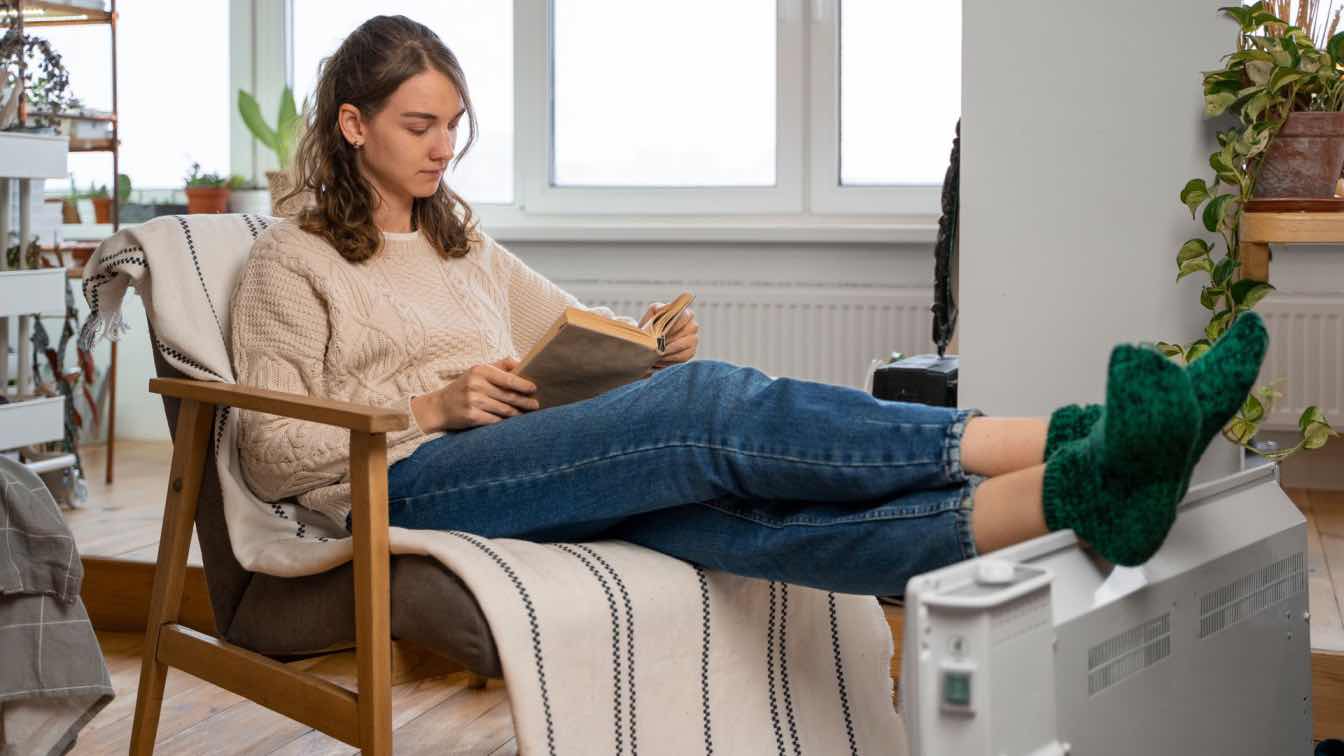Architecture is more than just design and style—it has the power to affect comfort, energy consumption, and even mood within a home. One of the most significant ways architecture influences a building is through its impact on indoor temperature.
With clever design choices, a home’s architecture can minimize heat gain in summer, retain warmth in winter, and reduce the need for artificial heating and cooling.
Here, we’ll explore the many architectural elements that contribute to temperature regulation, from materials and layout to roof ventilation and insulation.
1. Orientation and Layout: Designing with the Sun
One of the earliest considerations in architectural design is a building’s orientation. The way a home or structure is positioned relative to the sun can greatly affect its temperature.
In the Southern Hemisphere, homes that face north tend to benefit the most from natural sunlight, particularly in winter, when the sun is lower.
This orientation allows for maximum sunlight to enter during the day, keeping rooms naturally warmer. However, in the summer months, the sun is higher, and careful placement of windows, shading, and roof overhangs can help block excess heat.
An intelligently planned layout also plays a role in temperature control. Rooms used most frequently, like living areas, can be placed on the north side to maximize warmth in winter, while utility spaces, such as garages and bathrooms, are often better positioned to the south, where they’re less exposed to direct sunlight.
Open-plan layouts also encourage better airflow, which can be beneficial for keeping indoor temperatures balanced across the home.
Architects use passive solar design principles, a form of sustainable architecture, to harness these benefits naturally.
By orienting a house to capture winter sunlight and avoid summer heat, they reduce the need for artificial heating and cooling, which ultimately conserves energy and saves on utility bills.
2. Building Materials: The Power of Thermal Mass
Building materials are another essential factor in temperature regulation. The term “thermal mass” refers to materials that can absorb, store, and release heat. High-thermal-mass materials—such as concrete, brick, and stone—work like thermal batteries.
During the day, they absorb heat from sunlight, and at night, they release that stored warmth back into the home, stabilising indoor temperatures and reducing the need for heaters or air conditioning.
Thermal mass is especially beneficial in climates with high day-to-night temperature fluctuations. In hot climates, for example, materials like concrete can absorb excess heat during the day, preventing it from permeating indoor spaces.
At night, when temperatures cool down, the material releases the heat gradually, keeping interiors warmer.
Using high-thermal-mass materials on the walls, floors, and even countertops of a home can be a practical way to create a comfortable indoor climate without relying heavily on energy-intensive temperature control systems.
But it’s essential to balance thermal mass with proper insulation, as the wrong combination could trap excess heat in warmer months, making the home uncomfortably warm.
3. Roof Design and Ventilation: Cooling from Above
Roof design is pivotal when it comes to indoor temperature control. As the highest surface exposed to sunlight, the roof can significantly influence how much heat enters a home.
A well-designed roof considers both materials and color to manage heat gain effectively.
Light-coloured, reflective roofing materials, for instance, help to bounce sunlight away, reducing heat absorption and keeping indoor temperatures down.
Beyond materials and color, roof ventilation plays a major role in regulating indoor temperatures. Proper ventilation allows hot air to escape and fresh, cooler air to enter, helping to reduce the buildup of heat in attic spaces, which can seep into living areas.
This process is particularly useful during the hot Australian summer, where high temperatures can make indoor spaces feel stifling.
Roof ventilation is an often-overlooked yet effective way to cool a home. Upside Down highlights the benefits of proper roof ventilation, including better temperature control, extended roof life, and improved air quality.
Without adequate ventilation, trapped hot air in the attic can make cooling systems work harder, leading to increased energy use and higher bills. Adding ridge vents, soffit vents, or even solar-powered exhaust fans can improve airflow and ensure the roof doesn’t retain unnecessary heat.
4. Windows and Glazing: Letting in Light, Not Heat
Windows can have a double-edged effect on indoor temperature. On the one hand, they allow natural light to enter, which can reduce the need for artificial lighting and contribute to passive heating during cooler months.
On the other hand, they are also a major source of heat gain in summer. As a result, architects need to be strategic with window placement, size, and glazing.
Double or triple glazing is an effective solution for reducing heat transfer. These insulated glass units consist of two or three panes of glass with a space between them, which is often filled with argon gas to improve insulation.
Double-glazed windows help maintain indoor temperatures by keeping hot air out in summer and retaining warmth in winter.
Low-emissivity (Low-E) coatings can further improve energy efficiency by reflecting heat-producing infrared light, allowing natural light to enter without raising temperatures excessively.
Strategic shading is another essential component. For example, overhangs, awnings, or louvers can block high summer sun while allowing lower winter sun to enter. This approach combines passive solar heating and cooling, providing the right balance of warmth and shade throughout the year.
5. Insulation: The Unsung Hero of Temperature Control
Good insulation is the backbone of any temperature-regulated home. It acts as a barrier to heat flow, keeping warm air in during winter and out during summer.
Without proper insulation, even the best architectural features may struggle to prevent temperature fluctuations.
Insulation comes in various forms, including fiberglass, cellulose, and spray foam, each suited to different climates and building needs.
For optimal performance, insulation should be installed in all major parts of the home: walls, ceilings, floors, and the roof. In Australia, many homes benefit from insulation with an R-value (a measure of thermal resistance) that suits the climate of their specific region.
Higher R-values are recommended for colder climates, while moderate values are sufficient for milder areas.
In well-insulated homes, internal temperatures remain relatively stable, regardless of outdoor conditions. This helps reduce reliance on heating and cooling appliances, ultimately leading to lower energy costs.
With advancements in sustainable architecture, newer types of insulation are not only more efficient but also environmentally friendly, further reducing a home’s carbon footprint.
6. Landscaping and Outdoor Design: Nature’s Cooling Influence
Believe it or not, landscaping can also impact a home’s indoor temperature. Plants, trees, and other natural elements can create shade, block wind, and even influence airflow, all of which contribute to a more comfortable indoor climate.
By placing trees or large shrubs near windows, walls, and roofs, homeowners can reduce the amount of sunlight that hits the building, lowering heat absorption.
Deciduous trees, which lose their leaves in winter, are an excellent choice for shading. In summer, their leaves provide natural shade, but in winter, they shed their foliage, allowing sunlight to warm the house.
Planting greenery around the home can also promote cooling through a process called transpiration, where plants release water vapor into the air, cooling their surroundings.
Additionally, surfaces like grass, mulch, or garden beds absorb less heat than concrete or asphalt, reducing the amount of radiant heat around a property.
By planning landscaping to support cooling, you create an external layer of temperature control that complements the architecture itself.
The Holistic Approach to Temperature Control
When all these architectural elements come together, they create a home that naturally regulates temperature, reduces reliance on artificial climate control, and enhances energy efficiency.
Through thoughtful design choices—from orientation and materials to insulation and ventilation—a home can be comfortable year-round while minimizing environmental impact and utility costs.
Architecture’s influence on indoor temperature is far-reaching. As we continue to prioritize sustainability, designing homes that leverage natural elements to maintain comfort becomes increasingly important.
By understanding how each architectural aspect contributes to temperature control, homeowners can make more informed decisions, whether building from scratch or upgrading an existing space.
Ultimately, smart architectural choices empower us to enjoy a comfortable indoor environment while respecting the natural world—a win-win for homeowners and the planet alike.





